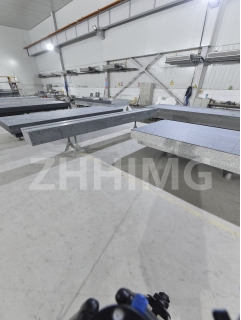Granite is a popular choice for countertops and flooring due to its durability and beauty. However, there are some considerations when using granite in a cleanroom environment.
Cleanrooms are controlled environments where levels of contaminants such as dust, microorganisms and aerosol particles are minimized. These rooms are commonly found in industries such as pharmaceuticals, biotechnology, and electronics manufacturing, where maintaining a sterile and contamination-free environment is critical.
When using granite bases in clean rooms, it is important to consider the porosity of the material. While granite is known for its strength, scratch resistance, and heat resistance, it is a porous material, which means it has tiny spaces, or holes, that can harbor bacteria and other contaminants if not properly sealed.
In a cleanroom environment, surfaces need to be easy to clean and disinfect to maintain the required level of cleanliness. While granite can be sealed to reduce its porosity, the effectiveness of the sealant in a cleanroom environment can be an issue. Additionally, seams and joints in granite installations can also pose a challenge to maintaining a completely smooth and seamless surface, which is critical in a clean room.
Another consideration is the potential for granite to produce particles. In clean rooms, the generation of particles must be minimized to prevent contamination of sensitive processes or products. While granite is a relatively stable material, it still has the potential to shed particles over time, especially in high traffic areas.
In summary, while granite is a durable and visually appealing material, it may not be suitable for use in a cleanroom environment due to its porosity, potential for particle generation, and challenges in maintaining a completely smooth and seamless surface. . In clean room applications, nonporous and easy-to-clean materials such as stainless steel, epoxy, or laminate may be a more suitable choice for bases and surfaces.
Post time: May-08-2024

